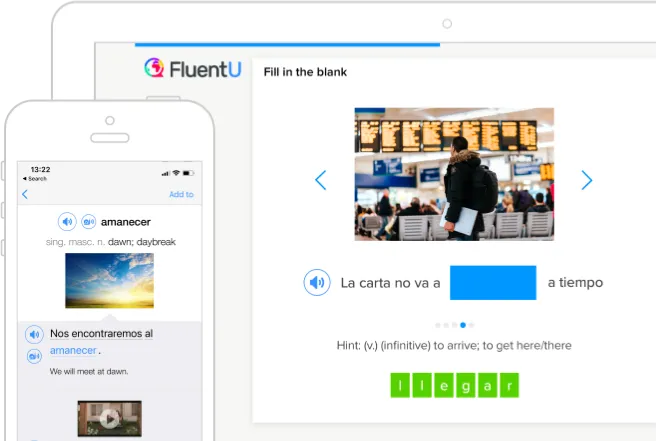

Before learning how to read, write or speak Russian, you must first understand the Russian alphabet.
This alphabet uses Cyrillic script and consists of 33 letters, some of which are the same as and some of which are different from the Roman alphabet.
This straightforward guide will show you each Russian letter and its pronunciation as well as give you some tips for learning the alphabet thoroughly.
Overall, the Russian alphabet contains:
Here are all 33 of the Russian letters with their names (how you would say them if you’re just talking about the letters themselves) and an example of how each would sound using similar English sounds.
| Letter | Name | Pronunciation |
|---|---|---|
| A a | Ah | Car |
| Б б | Beh | Big |
| В в | Veh | Very |
| Г г | Geh | Rag |
| Д д | Deh | Dinosaur |
| Е е | Yeh | Yes |
| Ё ё | Yo | Yodel |
| Ж ж | Zhe | Pleasure |
| З з | Zeh | Zebra |
| И и | Ee | Bee |
| Й й | Ee kratkoyeh (short ee) | Boy |
| К к | Kah | King |
| Л л | Ehl | Love |
| М м | Ehm | Mouse |
| Н н | Ehn | Never |
| О о | Oh | Original |
| П п | Peh | Perfect |
| Р р | Ehr | Run |
| С с | Ehs | Some |
| Т т | Teh | Time |
| У у | Oo | You |
| Ф ф | Ehf | Family |
| Х х | Khah | Loch |
| Ц ц | Tse | Bits |
| Ч ч | Che | Check |
| Ш ш | Shah | Shut |
| Щ щ | Shchah | Sheep |
| Ъ ъ | Tvyordeey znahk (hard sign) | Letter before is hard |
| Ы ы | Ih | Guttural "ee" in the back of the throat |
| Ь ь | Myagkeey znahk (soft sign) | Consonant before is soft |
| Э э | Eh | Bet |
| Ю ю | Yoo | Universe |
| Я я | Yah | Yard |
It is important to note that Russian cursive can be very useful to know, yet tricky to learn. Here is a chart that should help you start learning what Russian cursive looks like.
While you now know what the letters of the Russian alphabet are, some need further explanation as they are very different from English:
If you need a little more help learning the Russian alphabet, YouTube channels are an excellent resource to help you see and hear each letter. Here are some great resources to help get you started.
This YouTube video aims to teach you the Russian alphabet in just ten minutes.
It starts off with easy letters that are the same in both English and Russian, and then gets more complex. The video also uses real Russian vocabulary to help teach you the sounds in context.
RussianLessons.net offers a slow, clear video that lists each letter in alphabetical order, followed by several Russian words that use that letter.
While this is not a YouTube channel, FluentU is a virtual immersion program that makes for a great learning resource.
FluentU takes authentic videos—like music videos, movie trailers, news and inspiring talks—and turns them into personalized language learning lessons.
You can try FluentU for free for 2 weeks. Check out the website or download the iOS app or Android app.
P.S. Click here to take advantage of our current sale! (Expires at the end of this month.)
Now that you know the 33 Russian letters, you’ll be able to take the next step in your Russian learning journey!
If you love learning Russian and want to immerse yourself with authentic materials from Russia, then I should also tell you more about FluentU.
FluentU naturally and gradually eases you into learning the Russian language and culture. You'll learn real Russian as it's spoken by real Russian people!
FluentU has a very broad range of contemporary videos. Just a quick look will give you an idea of the variety of Russian-language content available on FluentU:
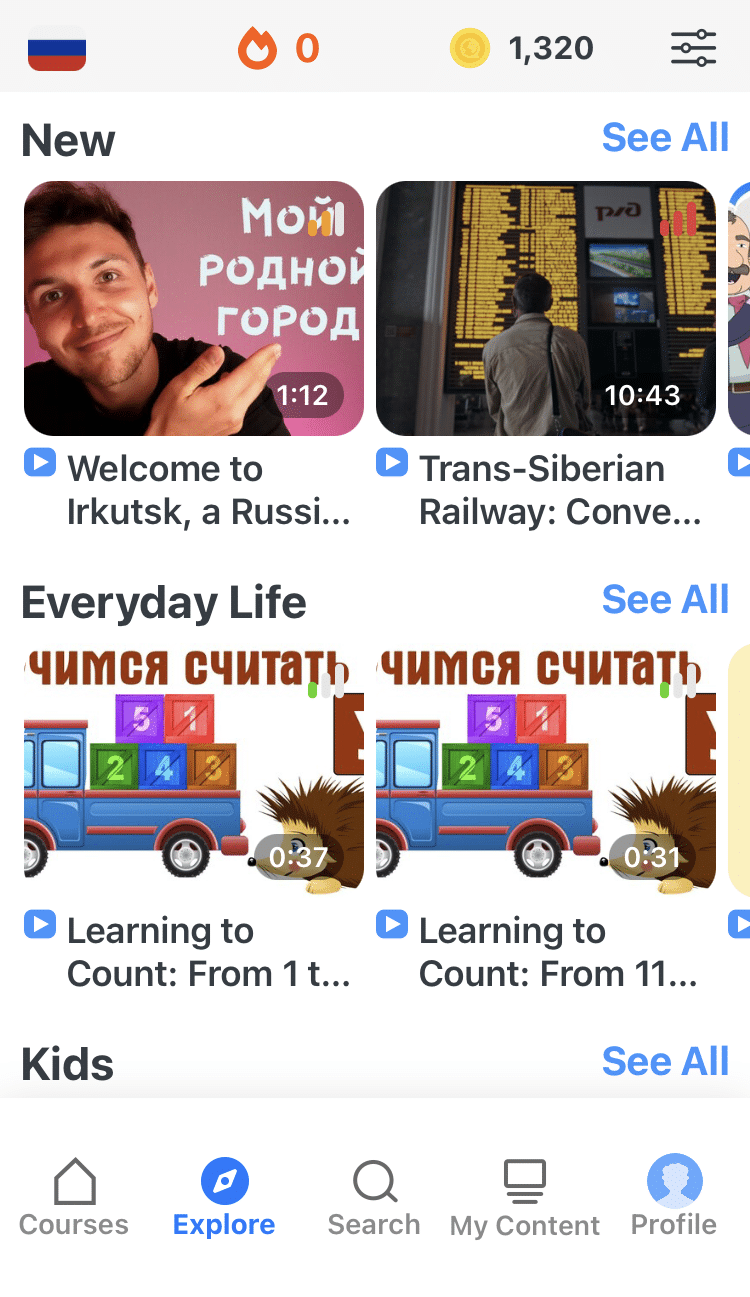
FluentU makes these native Russian videos approachable through interactive transcripts. Tap on any word to look it up instantly.
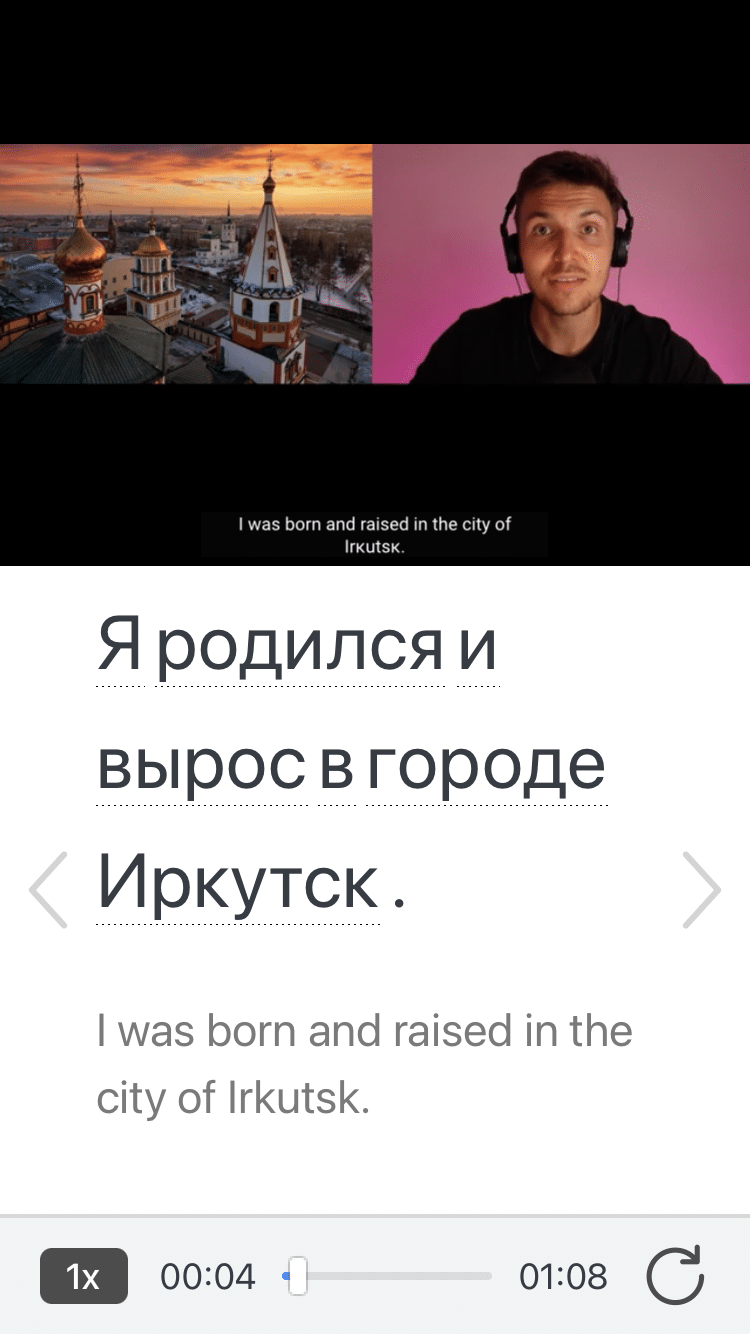
Access a complete interactive transcript of every video under the Dialogue tab. Easily review words and phrases with audio under Vocab.
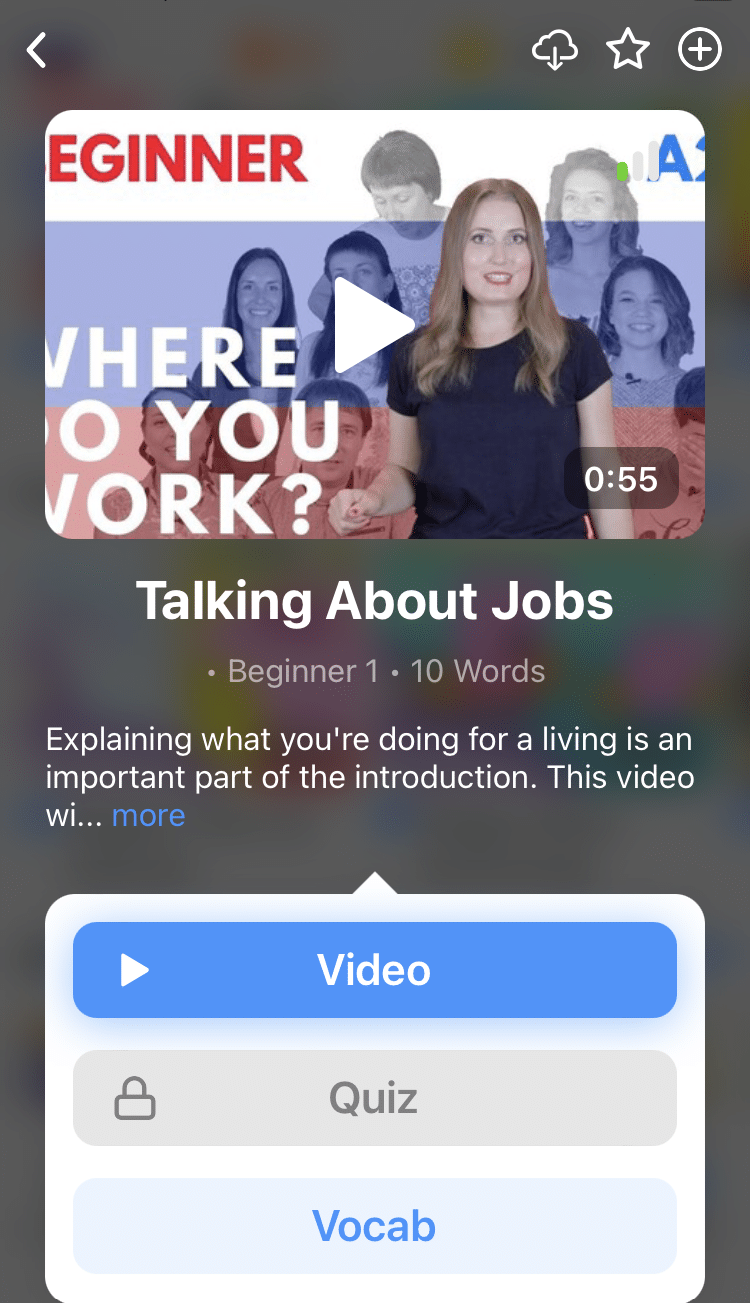
All definitions have multiple examples, and they're written for Russian learners like you. Tap to add words you'd like to review to a vocab list.
And FluentU has a learn mode which turns every video into a language learning lesson. You can always swipe left or right to see more examples.
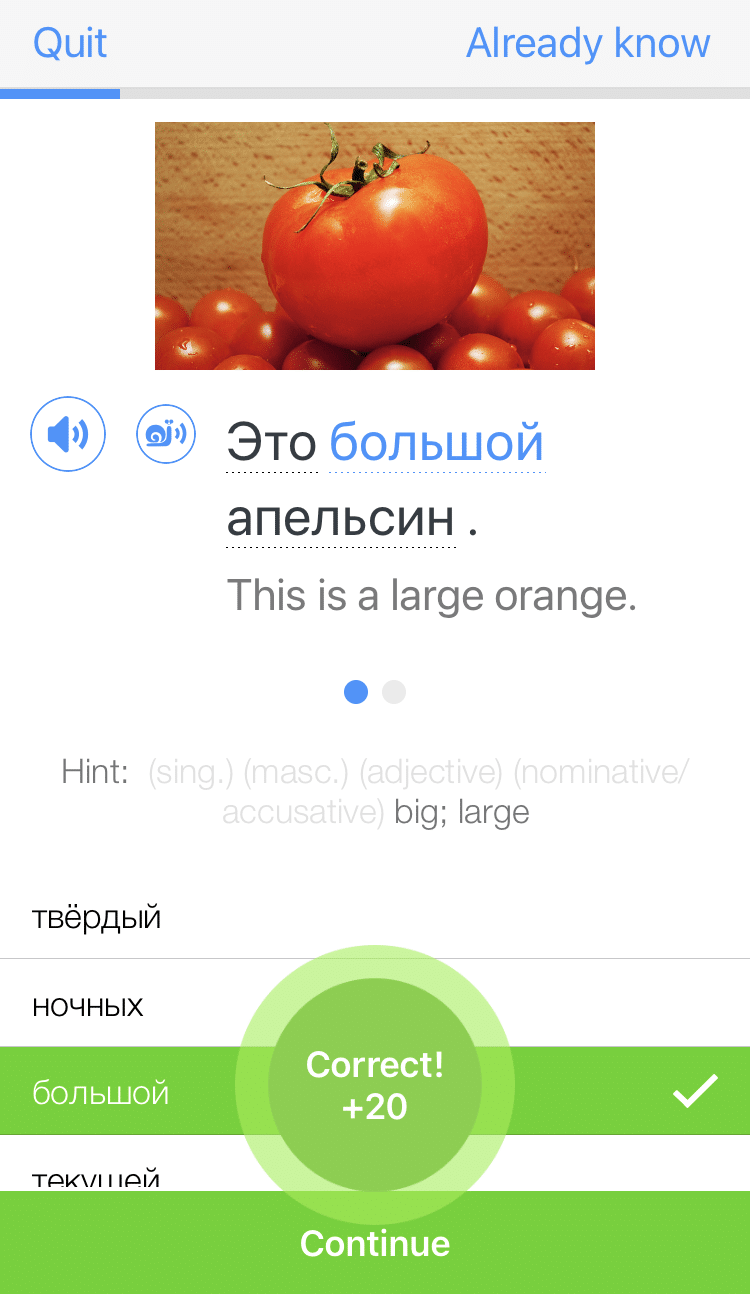
The best part? FluentU keeps track of your vocabulary, and gives you extra practice with difficult words. It'll even remind you when it’s time to review what you’ve learned. You'll have a 100% personalized experience.
Start using the FluentU website on your computer or tablet or, better yet, download the FluentU app from the iTunes or Google Play store. Click here to take advantage of our current sale! (Expires at the end of this month.)
